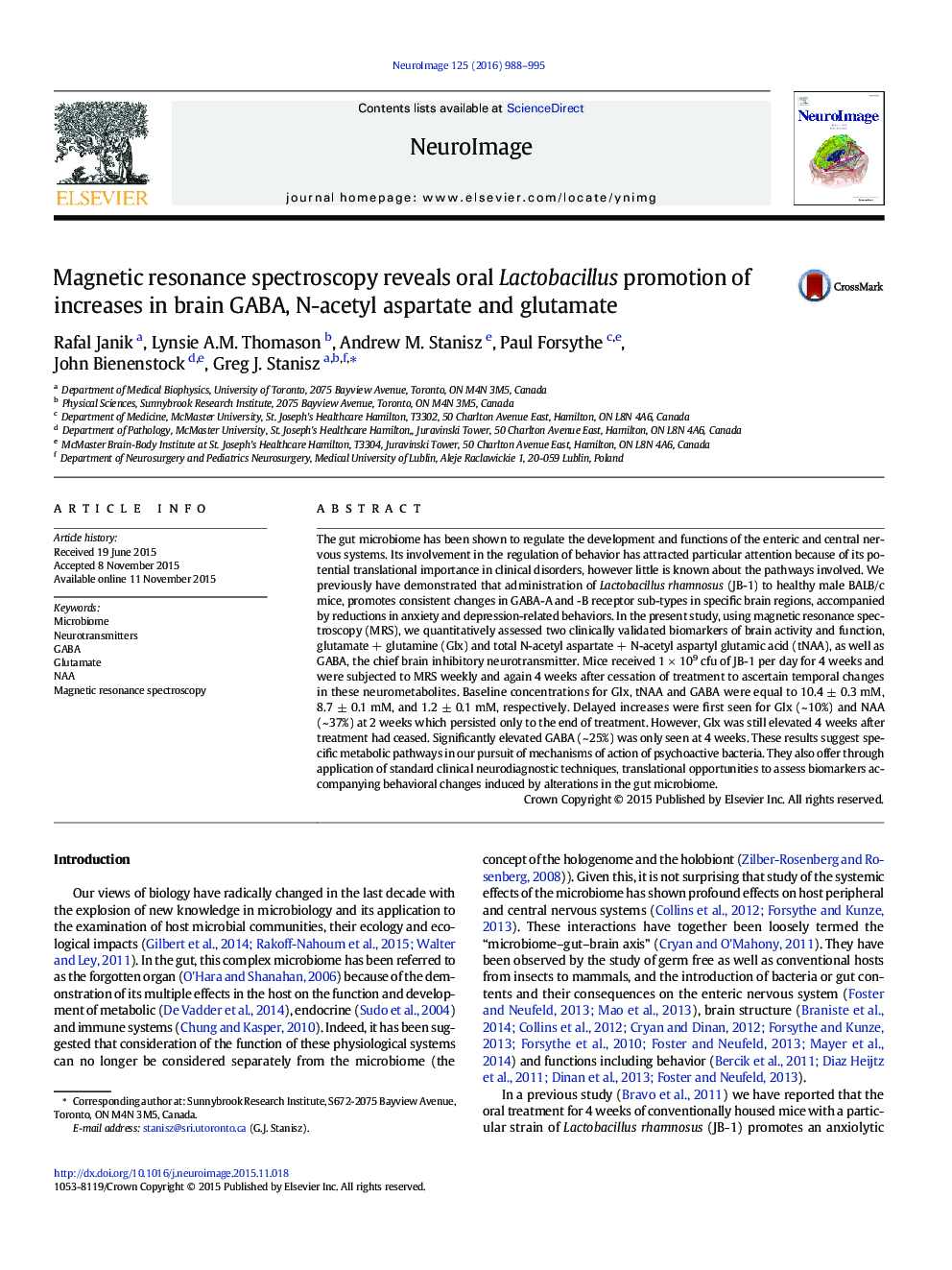| Article ID | Journal | Published Year | Pages | File Type |
|---|---|---|---|---|
| 6024213 | NeuroImage | 2016 | 8 Pages |
Abstract
The gut microbiome has been shown to regulate the development and functions of the enteric and central nervous systems. Its involvement in the regulation of behavior has attracted particular attention because of its potential translational importance in clinical disorders, however little is known about the pathways involved. We previously have demonstrated that administration of Lactobacillus rhamnosus (JB-1) to healthy male BALB/c mice, promotes consistent changes in GABA-A and -B receptor sub-types in specific brain regions, accompanied by reductions in anxiety and depression-related behaviors. In the present study, using magnetic resonance spectroscopy (MRS), we quantitatively assessed two clinically validated biomarkers of brain activity and function, glutamate + glutamine (Glx) and total N-acetyl aspartate + N-acetyl aspartyl glutamic acid (tNAA), as well as GABA, the chief brain inhibitory neurotransmitter. Mice received 1 Ã 109 cfu of JB-1 per day for 4 weeks and were subjected to MRS weekly and again 4 weeks after cessation of treatment to ascertain temporal changes in these neurometabolites. Baseline concentrations for Glx, tNAA and GABA were equal to 10.4 ± 0.3 mM, 8.7 ± 0.1 mM, and 1.2 ± 0.1 mM, respectively. Delayed increases were first seen for Glx (~ 10%) and NAA (~ 37%) at 2 weeks which persisted only to the end of treatment. However, Glx was still elevated 4 weeks after treatment had ceased. Significantly elevated GABA (~ 25%) was only seen at 4 weeks. These results suggest specific metabolic pathways in our pursuit of mechanisms of action of psychoactive bacteria. They also offer through application of standard clinical neurodiagnostic techniques, translational opportunities to assess biomarkers accompanying behavioral changes induced by alterations in the gut microbiome.
Related Topics
Life Sciences
Neuroscience
Cognitive Neuroscience
Authors
Rafal Janik, Lynsie A.M. Thomason, Andrew M. Stanisz, Paul Forsythe, John Bienenstock, Greg J. Stanisz,
